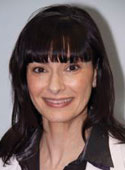By Dr. Jean Keamy
Dry Eye is one of the most common diseases in ophthalmology. Dry eyes can cause a variety of symptoms from foreign body sensation, blurred vision, red eyes, painful eyes, tearing, crusting on eyelids in the morning, white stringy discharge, discomfort with contact lenses, eye fatigue and burning. Some people will experience only one of these symptoms or a combination.
A normal tear film consists of three layers: a lipid layer, water layer and mucin layer.
 When either of these layers is out of balance, dry eyes result. When the lipid layer is decreased, tears evaporate quickly. This results ironically in tearing.
When either of these layers is out of balance, dry eyes result. When the lipid layer is decreased, tears evaporate quickly. This results ironically in tearing.
When the water layer or mucin layer are reduced any of the above mentioned symptoms can occur.
Dry eyes can be affected by many factors. As we age, the tear production decreases.
Menopause and pregnancy can greatly affect the tear production. Contact lenses can disrupt the surface of the tear film, which greatly increases the evaporation of tears, resulting in dry eyes.
In the winter, the decrease in humidity and increase in heat can increase dry eyes. In the summer, air conditioning, wind, fans and irritants in the environment can trigger it as well.
Another cause of dry eyes is prolonged computer use. Many people stare at their computer for hours per day. The staring decreases the blink reflex resulting in increased evaporation of tears. Many people will complain of eyestrain, red eyes and blurred vision while working on the computer. The culprit is dry eyes. Medications can induce dry eyes. Some of the medications known to affect the tear film are beta-blockers, antidepressants and diuretics. Patients with autoimmune diseases like thyroid disease, rheumatoid arthritis and lupus are at greater risk for dry eyes.
Lastly, surgery on the eye, such as LASIK or cataract surgery, can result in temporary or permanent dry eyes.
Dry eyes can be alleviated by the use of artificial tears, occlusion to the tear drainage system, medicated eye drops, nutritional supplements and changes in environment and behavior.
The use of artificial tears can help many people with dry eyes. There are over a 100 different types of tears. They are not all the same. Some last longer, while others are thicker or lighter. It helps to try several kinds to find the one that helps you. Tears should not be used more than four times a day. If they are, other treatment options should be explored.
Sometimes punctual plugs, small silicone rods resembling a stopper in a wine bottle, are placed in the eyelid punctum. This reduces the drainage of the tears through the nasal lacrimal duct. Another option is to use restasis, a medicated eye drop, that helps improve the quality of one’s own tears. Restasis can take up to six months to have its full effect. It works great but is not a quick fix. Nutritional supplements like fish oil or flax seed oil can help increase the lipid layer of the tear film. One needs to take approximately two grams a day to be therapeutic.
Lastly, changes in behavior and environment are helpful. Cleaning the eyelids with lid scrub and using warm compresses to the eyelids can improve the quality of the tear film by increasing the secretion of the tear lipid layer. Reducing contact lens wearing time or switching to a contact lens with more moisture can help contact lens wearers. The addition of a humidifier and air filter can help improve the air quality in the home. Sunglasses can act as a barrier to wind, sun and environmental irritants.
Without treatment of dry eyes, the symptoms of dry eyes can progress. Ultimately, dry eyes can lead to increased risk of infection and decreased vision. It is important to seek medical treatment at the first sign of dry eyes.
Dr. Jean Keamy is a board certified ophthalmologist specializing in cataract surgery, refractive surgery, eyelid surgery and diseases of the eye, including dry eyes. She owns Keamy Eye & Laser Centre at 24 Lyman St. in Westborough and can be reached at 508-836-8733. Learn more at www.seemedrkeamy.com. Archives of articles from previous issues can be read at www.fiftyplusadvocate.com.












